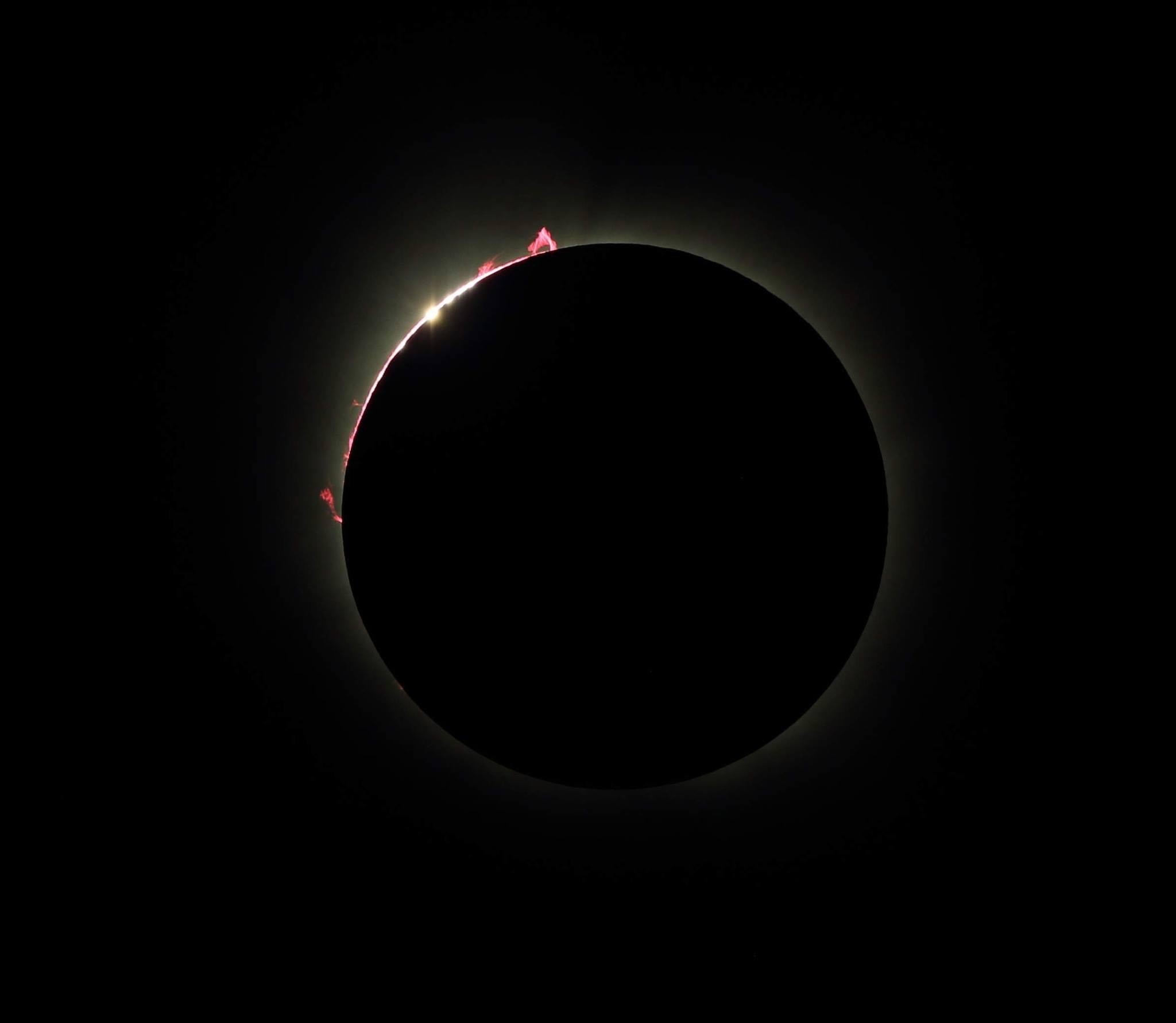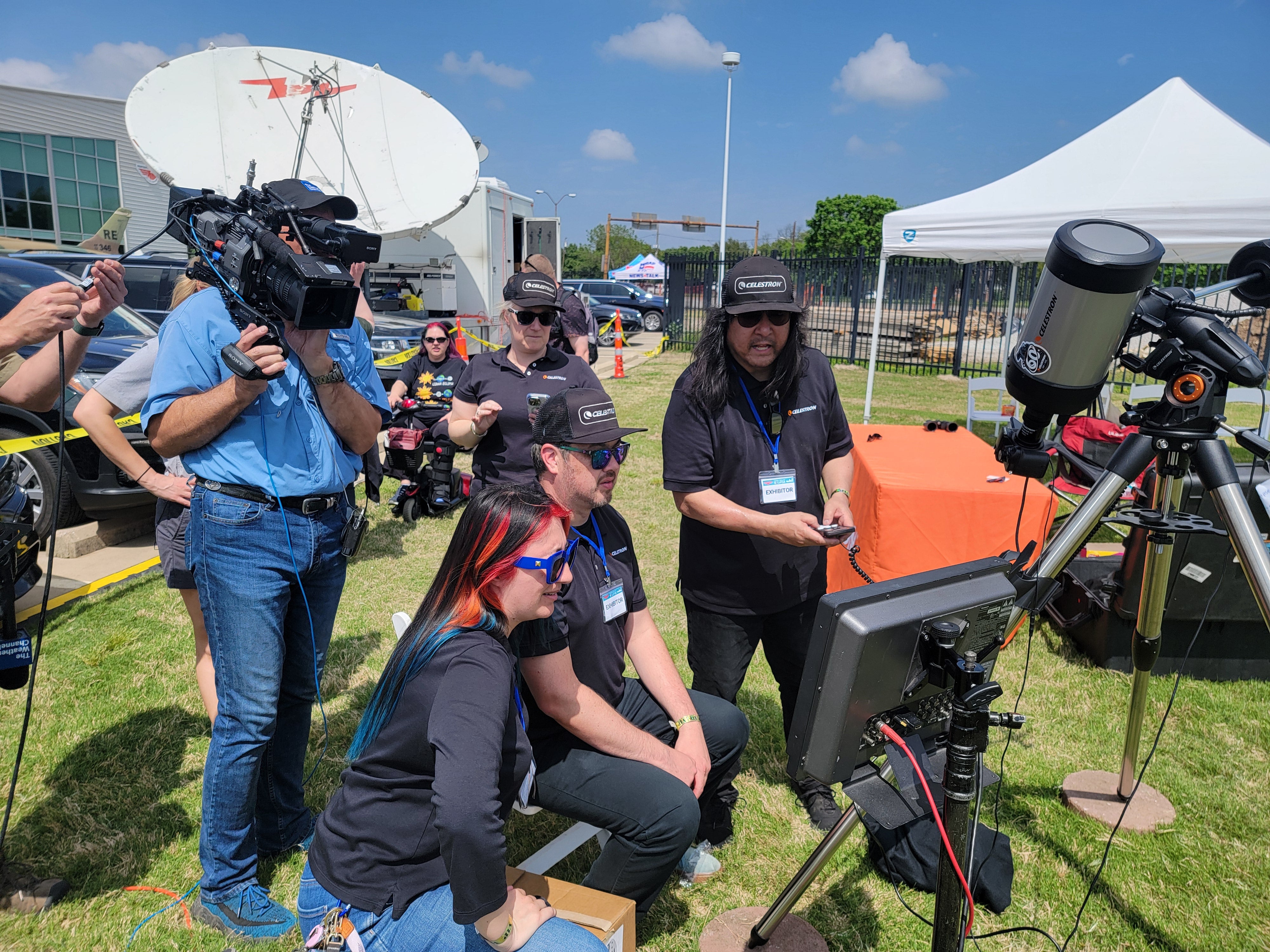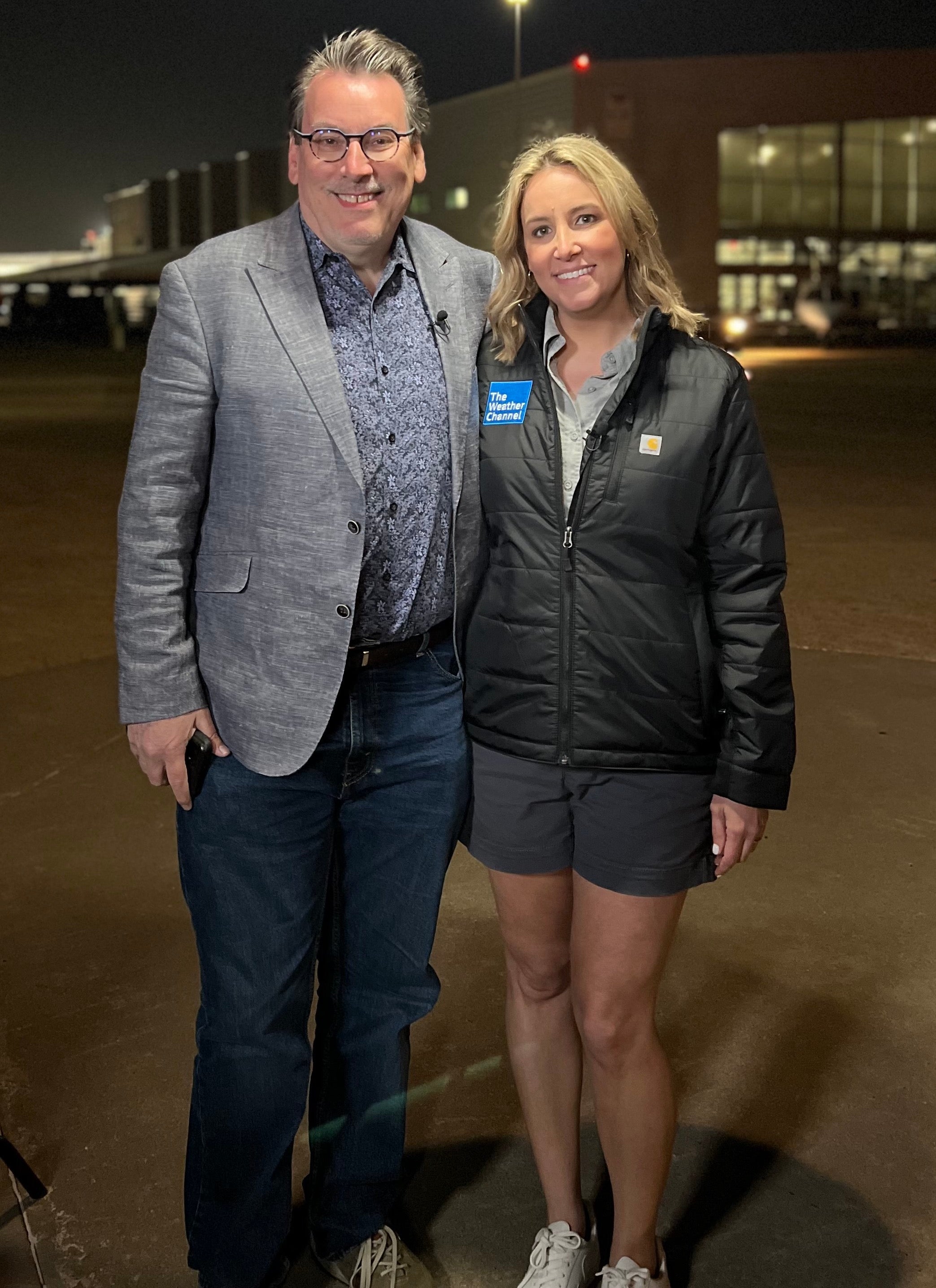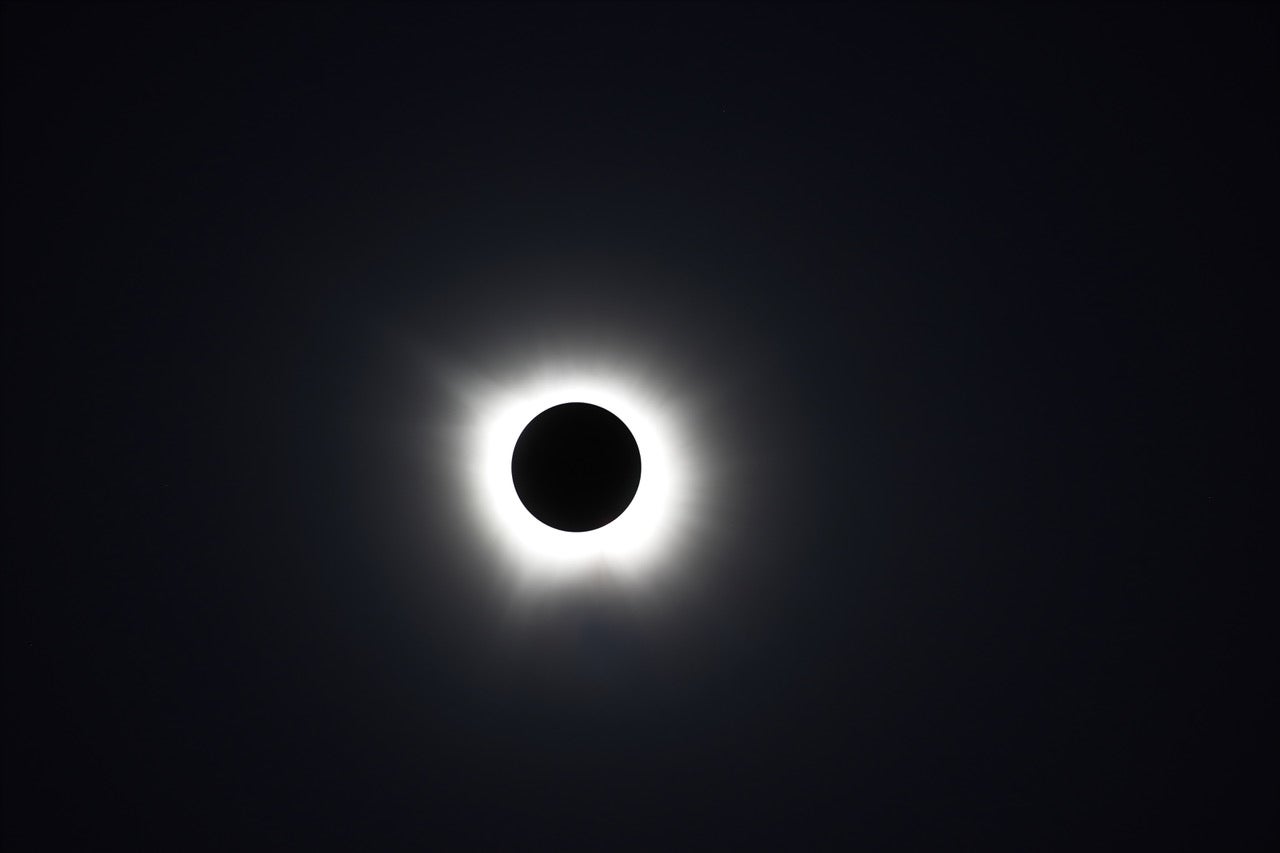
Weather is a one-day event. For all of the analysis of trends, of where clouds or Sun will mark the landscape, anything can happen on any given day. In Texas, the weather prospects for the Great American Eclipse looked bleak. For days, the idea that storms would plague the region of Dallas, or at least thick clouds, seemed a sure thing. And then came eclipse day.
My journey this year was centered on Love Airport, a historic locality known in recent years for the landing site for John Kennedy’s ill-fated 1963 trip to Dallas. Being a history guy, I spent the remainder of my travel day visiting the sites associated with that dark day in November, more than 60 years ago, when the course of the nation suddenly and shockingly changed.
The airport is still very active (we had planes taking off during totality!), and hosts a fantastic collection of aircraft and flight-related artifacts in the wonderful Frontiers of Flight Museum. Our hosts there, led by Abigail Erickson-Torres and facilitated by the energetic Rosalie Wade, assembled a wonderful day that invited some 2,500 members of the public into the grounds to view the eclipse.
The Editor of Astronomy Magazine was not alone, however. We partnered with our good friends at Celestron, and their staff turned out in force, with many people and several telescopes on the ground. The telescopic feed we relied on for potential TV use came from one of the Celestron scopes. Our good pals Corey Lee, Kevin Kawai, Ben Hauck, Stephanie Schroeter, and others were on hand. And that wasn’t all: Partners from The Weather Channel were also there, broadcasting live, with the great meteorologist Alex Wilson taking the lead on camera and a big team led by producer Mike Jenkins coordinating the whole process. I had a wonderful time spending parts of the day on camera with Alex, narrating our experience dodging clouds and seeing the alignment of worlds come together.

But as I said, when I drove to Love Field at 5 a.m. on eclipse day, it looked like a washout. Although I’m a galaxy guy, really most interested in deep-sky objects, as Editor of the brand you get to see lots of events. I had experienced a dozen total eclipses before this one, two of them underneath a solid blanket of clouds. Believe me, that’s not a good way to see an eclipse.
We got an early start on camera. It was an extreme pleasure working with Alex Wilson. She is such a smooth pro that it was effortless to talk about the science, the observations, the meaning of it all as we looked skyward and hoped for the alignment of worlds. As dawn broke, the sky was still sketchy and the forecast far less than great. I recall the network proclaiming that Maine seemed the best place as far as clear skies went. Mexico seemed troubled too. As we looked to the south, past Parkland Hospital on the horizon, walls of clouds seemed to be destined to move our way as the morning continued.

I spent the waning moments of pre-eclipse time in the museum auditorium with a packed house, delivering a lecture on everything everyone needed to know to view and image the eclipse. When I walked out into the field again at noon, with first contact approaching, the situation had changed. Clouds were less dense, and hope appeared. Amazingly enough, as we awaited first contact, we had significant holes and could get a good view of the Sun, some 60° high in the sky. We would see the start of things, at least.
As always happens, people screeched out in joy as the first little bite out of the Sun’s disk became visible. Although we’ve known about solar system motions precisely since the days of Johannes Kepler, it always seems a bit like magic to many people when we count down by the second and an eclipse starts. And then, even with thick clouds visible way down to the south, we had a long, vertical corridor of clear sky that seemed to favor us as totality approached.
It dawned on us that we were going to defy the odds and see this thing. Excitedly, Alex Wilson and I narrated much of what was happening on The Weather Channel, off and on. The rapid darkening of the sky during the final moments before totality always amazes, and we had a rapid cooling of air too. The diamond ring! Glasses off! We had totality and it looked spectacular!

Our Love Field site experienced 3 minutes 51 seconds of totality, and we saw the whole thing perfectly. The corona seemed large, flower-like, and with some pretty good brushes and rays, too, expected from the current cycle of solar activity. We had some nice prominences too, especially one at bottom right (as we faced south), that was incredibly bright near the end of totality. Venus popped out immediately and Jupiter too, after a bit of cloud passed it, and we did not expect to see Comet Pons-Brooks, nor waste time with binoculars searching for it. The chromosphere seemed bright around the Moon’s rim but lacked the color we saw in 2017. It was a beautiful eclipse, however, and we felt very lucky to have seen it so well.

It’s always struck me as funny that as soon as totality ends, the interest in the rest of the eclipse, for the next hour plus, kinda fades away. But alas, everyone was elated, celebrating a great view, and the party started. We had a very happy airport full of people, on a natural high from the experience, and already talking about other eclipse adventures — Iceland, Spain, and yes, the most amazing one to come, Egypt.
I hope that you also experienced a great eclipse. There’s nothing that quite equals seeing the worlds align, and remember that the Moon is inching away from us a little bit every year. We have only 600 million more years to catch total eclipses, and then they will be a thing of the past.
David J. Eicher is Editor of Astronomy, author of 26 books on science and history, and a board member of the Starmus Festival and of Lowell Observatory.









